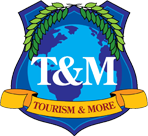When visitors ask what is there to do in your community
November 2005
There are few tourism officials whose communities do not suffer from local negative publicity. Often this negative publicity is so strong as to undermine the best marketing campaigns. Negative publicity comes in many forms, from the local media whose motto may be “if it bleeds it leads” to the people who work at gas stations or convenience stores. Many of the people with whom tourists come in contact when asked what there is to do in a community respond with the classical answer: “Nothing.” Part of the reason for this problem is that tourism often hires many part time workers who have not experienced their own community’s attractions or are teenagers who simply want to get away from their parents. When asked what there is to do, many of our attendants, waiters or waitresses answer either directly or by implication: “Nothing, go somewhere else!”
To make matters more challenging, many tourists tend to believe these front-line people over any printed material that a tourism office may have published. This month’s Tidbits looks at the problem of front-line personnel who may or may not be directly working in the tourism industry and in one way or another undermine it. Tourism Tidbits offers you a number of suggestions as to what you can do to win the war against the “nothing to do here” syndrome. While there is no one solution to this problem, the following potpourri of ideas may stir your creative justices.
- Realize that you most likely have no idea how many people a year your community loses to locally produced negative publicity. It is easy to quantify those who stay, but almost impossible to quantify those who stop for gas and then move on. To add to the problem, front-line personnel change very rapidly. Few people make careers of being waiters/waitresses, or working at a convenience store, thus static training usually ends up with a sense of false accomplishment.
- Be cognizant that local storeowners and gas station owners owe the tourism industry nothing. All too often, tourism professionals forget that the local community rarely connects tourism to its economic development. Rather than asking local businesses to help promote tourism, finds ways to make tourism work for the local businessperson.
- Remember the 4-hour rule. You do not need to keep a visitor in your community for days, only four extra hours. By encouraging a visitor to spend an extra four hours within your community, you have increased the probability that your visitors may have one extra meal, buy one extra tank of gas, or even spend the night.
- Information dispersal helps to counter negativity. The less dependent you are on front-line personnel, the better chance you have of capturing the tourist who seeks information about your community. Place brochures around town, put them by restaurant cash registers, at local professional offices and in front of your town’s tourism office, police station, fire station and post office. Encourage the front-line workers to read the brochures.
- When referring to brochures, quantity is better than quality. Do not spend a lot of money on brochures. Instead, a simple well-done brochure will often do the trick. Brochures do not have to be fancy, but they do need to be professional. Few people will make a decision on the quality of your brochure. What counts is getting something into people’s hands.
- Be careful in your use of electronic kiosks. Tourism is about people and when visitors are required to gather information from auto-scroll electronic kiosks, there is an instant depersonalization. While “people” rarely are tourism attractions, once in a community, the quality of the people with whom a visitor comes in contact may well determine the length of stay.
- Develop a tourism certification course for front-line workers at their place of business. Make the course last under an hour, and develop a window sticker that can be used to advertise cooperative businesses. Include in the course basic facts such as: the name of one local restaurant, the names of one local place of lodging and one tourism attraction, one rainy day activity and one evening attraction. Then list those businesses and establishments that are “tourism friendly.”
- Request that your city’s police officers carry tourism literature. Visitors often stop police officers and ask them for information. If a police officer hands a visitor a local brochure, he/she is giving out not only important information, but making a statement that your community cares about visitors.
- Develop a high school education seminar and/or a work-study for high school students to learn about your town’s history and attractions. High school students fill many of the front-line tourism jobs. Many teenagers do not connect their words with local economic development. A special for-credit high school course ensures getting the word out, specifically to the people that you want to educate.
- Establish a familiarization tour for those who work in your service industries. Many tourism offices and chambers of commerce spend a lot of money on familiarization tours for out-of-towners but do nothing to win over the local population and media. Create a yearly in-town familiarization tour and let the local population experience your community as others do. .
- Write a weekly/monthly column about your town for the local newspaper. Most tourism professionals tend to neglect the local population. Such a press column not only serves to educate the local population about what there is to do in your community, but also helps the local population understand the role of the CVB or chamber in tourism.



